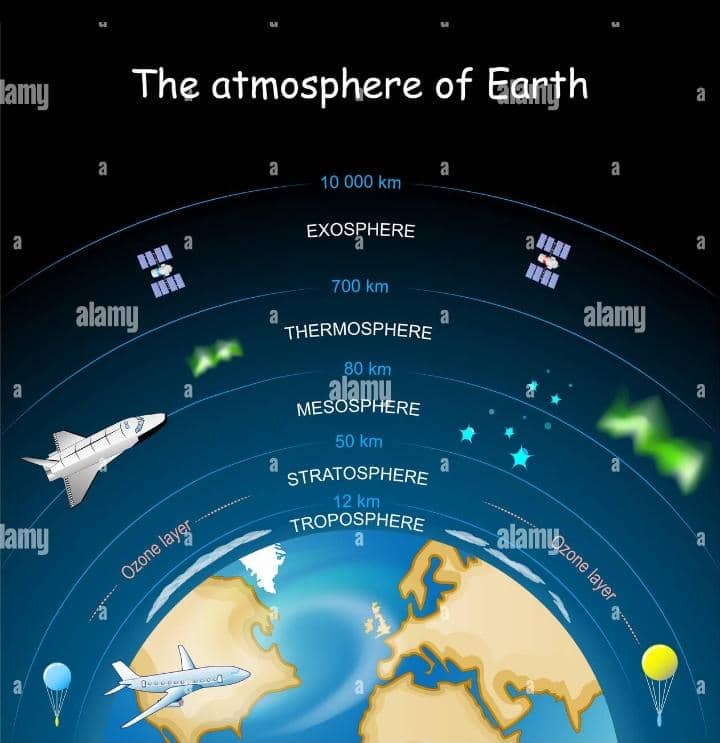The Earth’s atmosphere is a vital and complex system that sustains life and protects our planet from harmful solar radiation. Traditionally, it is categorized into five main layers: the troposphere, stratosphere, mesosphere, thermosphere, and exosphere.
However, some classifications expand this framework to include the ionosphere and ozonosphere, resulting in a total of seven distinct layers. Each layer possesses unique characteristics and functions that are crucial for maintaining the Earth’s environmental balance.
The troposphere is the lowest layer, extending from the Earth’s surface up to about 12 kilometers. This layer is essential for life as it contains most of the atmosphere’s mass and is where all weather phenomena occur. Temperature decreases with altitude in this layer, making it crucial for regulating climate.
The troposphere holds the air necessary for breathing and supports plant life through photosynthesis. It also contains nearly all of the water vapor in the atmosphere, which forms clouds and precipitation.
Above the troposphere lies the stratosphere, which stretches from approximately 12 km to 50 km. This layer is characterized by a temperature inversion; as altitude increases, so does temperature due to the presence of the ozone layer.
The ozone layer absorbs harmful ultraviolet (UV) radiation from the sun, providing a protective shield for living organisms. The stratosphere also serves as a critical zone for commercial aviation, as most aircraft operate within this region.
The mesosphere extends from 50 km to about 85 km above sea level and is known as the coldest layer of the atmosphere. In this region, temperatures decrease with altitude, reaching some of the lowest temperatures in Earth’s atmosphere.
The mesosphere plays a protective role by burning up meteors that enter this layer, preventing them from reaching the Earth’s surface. This layer is also where noctilucent clouds can form under specific conditions.
Following the mesosphere is the thermosphere, which ranges from approximately 85 km to 600 km. This layer experiences a significant increase in temperature with altitude due to the absorption of high-energy solar radiation.
Despite its high temperatures, the air density is extremely low, making it feel cold to humans. The thermosphere contains the ionosphere, which reflects radio waves and is responsible for phenomena such as auroras. It also hosts many satellites that orbit Earth.
Finally, the exosphere marks the transition between Earth’s atmosphere and outer space, extending from about 600 km to 10,000 km. In this layer, particles are so sparse that they can travel vast distances without colliding with one another.
The exosphere gradually fades into space and plays a crucial role in satellite operations and space exploration. Together with layers like the ionosphere and ozonosphere, these seven layers form a protective barrier around Earth, enabling life to thrive while safeguarding it from cosmic threats.

